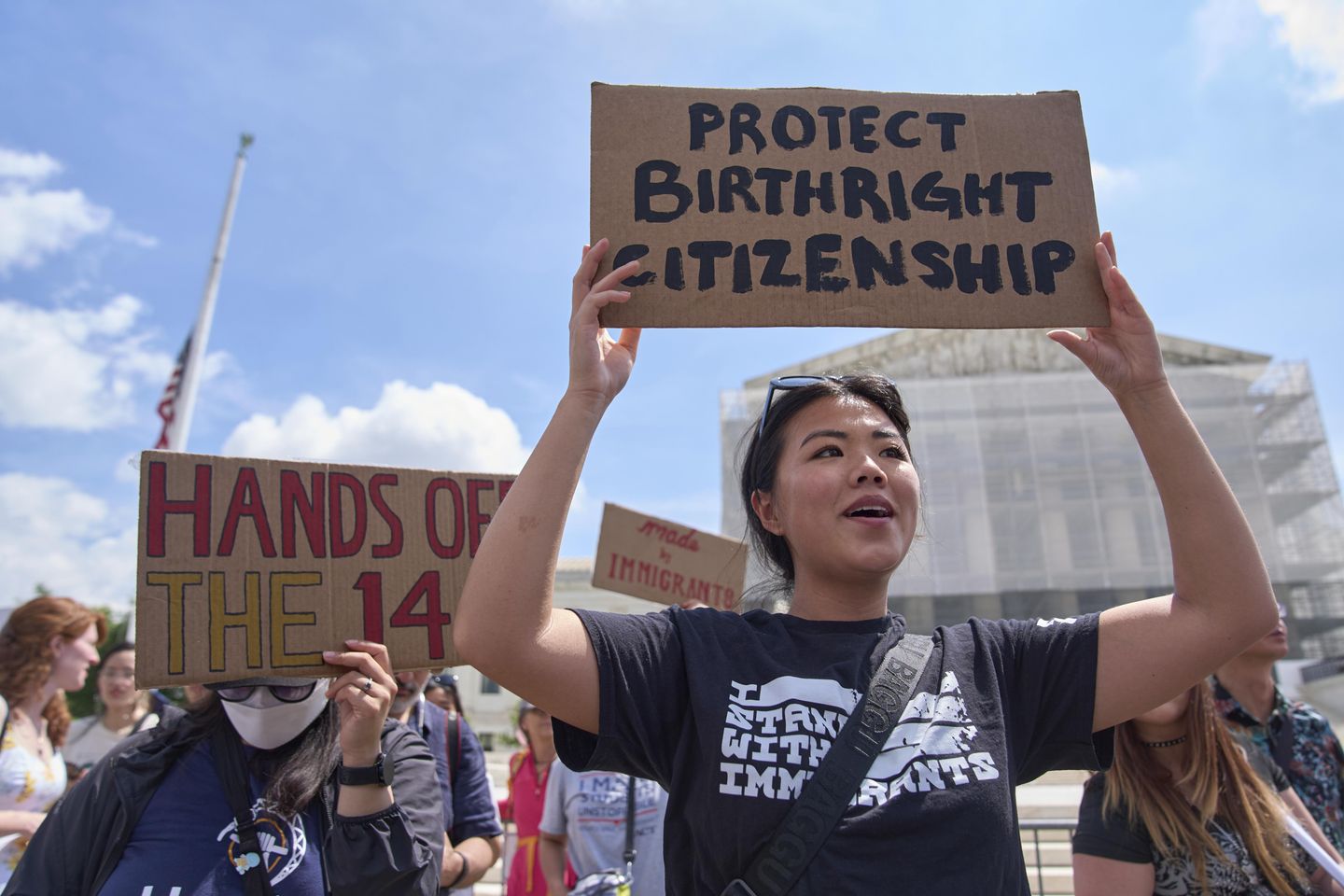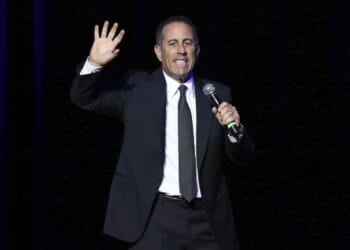
The Supreme Court grappled Thursday with the growing power of district judges to shut down government action, with the justices acknowledging “abuses” but struggling to figure out a clean way to rein in those local courts.
The case arose out of President Trump’s executive order trying to limit birthright citizenship for children born to illegal immigrants and foreign temporary visitors.
Some justices made clear they thought Mr. Trump went too far, but they mostly focused on the growing conflicts between presidents and judges.
At stake are what are known as nationwide or universal injunctions, where a single district judge can take a case brought by a single plaintiff and halt a congressional law or a president’s actions throughout the nation.
At least three courts did that for Mr. Trump’s birthright citizenship order.
Solicitor General D. John Sauer, arguing for the president, said under the Constitution’s Article III, which sets up the federal courts, district judges’ rulings should be restricted to the plaintiffs in front of them.
“It is a feature, not a bug, of Article III that the courts grant relief to the people that are in front of them,” he said.
Justice Elena Kagan was sympathetic, saying she recognizes a problem with lower courts increasingly flexing powers to shut down a president’s agenda.
She worried about taking the judges off the field altogether, particularly in cases like birthright citizenship, where fundamental rights are at stake.
“There are all kinds of abuses of nationwide injunctions, but I think that the question that this case presents is that if one thinks it’s quite clear that the executive order is illegal, how does one get to that result and what time frame, on your set of rules, without the possibility of a nationwide injunction?” the Obama appointee prodded Mr. Sauer.
Justice Ketanji Brown Jackson said that if the government gets its way, it will trigger a flood of lawsuits, as anyone who wants protection will have to get a lawyer and sue on his or her own.
“Your argument seems to turn our justice system into a catch-me-if-you-can kind of regime from the standpoint of the executive, where everybody has to have a lawyer and file a lawsuit in order for the government to stop violating people’s rights,” the Biden appointee said.
Mr. Trump’s executive order directed U.S. agencies not to recognize citizenship for children born to parents in the country illegally or here on temporary visitor visas.
Most legal scholars who have looked at the issue say the policy violates the 14th Amendment of the Constitution, which guarantees automatic citizenship to “all persons born or naturalized in the United States, and subject to the jurisdiction thereof.” At the very least, most scholars agree, it would take an act of Congress to redefine the policy, not a presidential order.
Mr. Trump has lost in preliminary legal wrangling in every lower court. Three of those have been universal injunctions, and two have already been sustained by circuit courts of appeal.
Some of the court’s Republican appointees were skeptical of those expansive rulings.
“The practical problem is there are 680 district court judges,” said Justice Samuel A. Alito Jr, an appointee of George W. Bush. “Sometimes they’re wrong, and all Article III judges are vulnerable to an occupational disease, which is the disease of thinking ‘I am right.’”
Justice Clarence Thomas said the courts operated for nearly two centuries without needing to issue such broad rulings.
“We survived until the 1960s without universal injunctions,” the George H.W. Bush appointee said.
However, over the past two decades, they have flooded the federal courts, Mr. Sauer said.
He said Mr. Trump faced 64 injunctions in his first term, President Biden saw 22 against his policies, and Mr. Trump has already seen 40 in less than four months of his second term.
Mr. Sauer told the justices that eliminating universal injunctions would still leave plaintiffs with tools such as class action lawsuits.
He said those can deliver wide-ranging rulings that reach even people who didn’t sue, but they require higher standards, such as proving that all members of the class share standard features. He also said the rulings in class actions bind both parties, so those suing have more skin in the game.
Critics, though, worry that gathering and certifying a class is a procedure that takes time, too much time when evaluating whether a policy is infringing on Constitutional rights.
Trump opponents have said the lack of universal injunctions would mean illegal or even unconstitutional presidential policies could remain on the books for months or even years while cases wind their way to the high court.
Chief Justice John G. Roberts Jr. challenged that notion, saying the Supreme Court has been able to act quickly. He pointed out that the court sped this year’s TikTok case through in just a month.
“We’ve been able to move much more expeditiously,” said the chief justice, a pick of George W. Bush.
Several justices suggested Mr. Trump’s birthright citizenship order was a bad case to argue against universal injunctions because the president was so clearly wrong.
“As far as I see it, this order violates four Supreme Court precedents,” said Justice Sonia Sotomayor, an Obama appointee.
She compared it to a policy by a future president confiscating every gun from every citizen. She said it would be unthinkable that a lower court wouldn’t have the power to issue a universal injunction, or that every gun owner who wanted to keep a weapon would have to sue to preserve that right.
“We couldn’t stop them?” she demanded of Mr. Sauer.
She also chided Mr. Sauer’s class action suggestion, or in the alternative, said individuals would be filing thousands of lawsuits, which “makes no sense whatsoever.”
Jeremy Feigenbaum, the lawyer for New Jersey, one of the plaintiffs who challenged the president, said having different citizenship rules makes no sense.
“We never in this country since the Civil War had your citizenship turned on when you cross state lines,” he said. “We genuinely don’t know how this could possibly work on the ground.”
He pointed out that if there were different rules, states might have to determine the birth status of any child being signed up for Medicaid.
He warned that siding with the federal government would “produce unprecedented chaos on the ground.”
Even Mr. Sauer struggled to explain how it would work in practice.
“We don’t know, because the agencies were never given the opportunity to formulate the guidance,” he said.
That seemed to trouble Justice Brett M. Kavanaugh, a Trump appointee.
“They’re only going to have 30 days. You think they’re going to get it together in that time?” he wondered. “On the day after it goes into effect — this is just a very practical question — how is it going to work? What do hospitals do with a newborn? What do states do with a newborn?”
The justices combined three cases for Thursday’s oral argument. They were Trump v. CASA, Trump v. Washington and Trump v. New Jersey.












